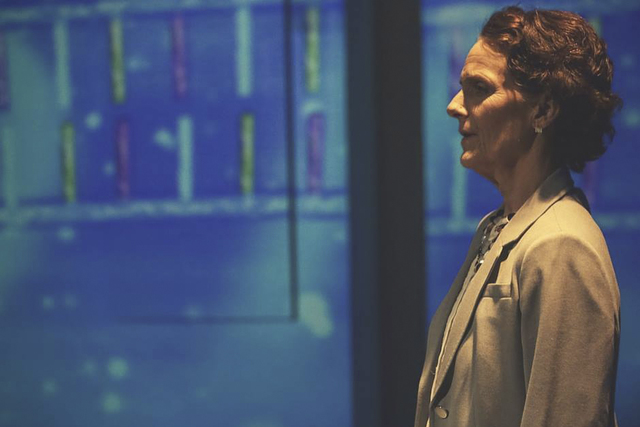Set designer Craig Wollam renders the eponymous house in Henrik Ibsen’s revolutionary 1879 masterpiece as a delicate, robin’s-egg-blue facade thrusting toward the audience like the bosom of a lady in too-high heels. It evokes the empathy Ibsen had for women of his society, who, corseted and caged, sang for their suppers in the homes of their husbands. Banned in some places, subdued with meeker story elements in others, A Doll’s House met some of the same social controls that bind its famous heroine, Nora Helmer. Today, however, director Russ Banham eases the reins and whips up some fresh interest with a colloquial new rendering by local translator Sean Patrick Taylor. The Helmer household breaks like an egg in this affably exaggerated, whimsy-tinged production.Long-married Nora (Jennifer Sue Johnson) and Torvald (Michael Patten) have had some lean years, but things are about to change with his promotion to VP of his bank. When Nora’s childhood friend Kristine (Betsy Schwartz) turns up at Christmas and gently implies that Nora’s a sheltered brat, Nora discloses that she saved Torvald’s life by secretly borrowing funds to take him to Italy to recover from a life-threatening illness. That she did so by forging her late father’s signature has exposed her to blackmail by the lender, Torvald’s employee Krogstad (Peter Dylan O’Connor). The twin male tyrannies of Torvald’s patronizing criticisms (he calls her a “fritterbird,” among many other derogatory bird names) and Krogstad’s menacing demands for advancement push Nora into the famous corner from which the only endurable exit is the door.As Nora, the diminutive Johnson flits like a hummingbird, trembling with eager-to-please energy. She often plays Nora for broad comedy, Lucille Ball–style: manic, narcissistic, bigger than life. (She even unwittingly whacks people with her huge blond braid while flouncing away from them.) This somewhat irritating interpretation—Nora as ditz—makes her subsequent awakening all the more humiliating, as she confronts a lifetime’s worth of defense mechanisms. However, Johnson can’t quite manage to sell Nora’s hypersexualized reactions to eating bonbons (these moments look suspiciously like the orgasms she simulated as Mrs. Givings in ACT’s In the Next Room two years back).At the other end of the spectrum, Patten—Seattle theater’s go-to stiff guy—portrays Torvald as a lurching oaf alternately chastising and cooing in the same condescending key. Still, he somehow finally elicits sympathy for Torvald’s moral blindness, a product more of his culture than of his intentions. Ibsen was far ahead of his contemporaries in rendering plausible characters with both good and bad in them—exemplified by Schwartz’s and O’Connor’s nuanced, naturalistic performances. Schwartz physically conveys the toll of Kristina’s subsistence jobs; she’s too exhausted for extracurricular gamesmanship. O’Connor brings a quiet dignity—along with a bumper crop of facial hair—to the play’s often overdone “villain.” Other worthy regulars from Seattle Shakespeare Company include George Mount as the superfluous, terminally ill Dr. Rank and Jody McCoy as the Helmers’ nanny, who recalls what it was like to give up her child.Inspired by an acquaintance of Ibsen’s who was banished by her family after similarly lying to save her husband, A Doll’s House is still one of the most frequently performed plays in the world. Women may now vote and study and smoke and wear pants, but that doesn’t mean they’ve stopped bending themselves to please men or suppressing their own desires. (I won’t mention Rihanna and Chris Brown . . . no, on second thought I will.) This capable adaptation isn’t screamingly topical or modern, but it serves Ibsen well. As the dollhouse walls evaporate at the play’s end, we’re reminded of the two ways in which an egg can break—a fatal fall from the nest, or the hatching of new life.stage@seattleweekly.com
Set designer Craig Wollam renders the eponymous house in Henrik Ibsen’s revolutionary








